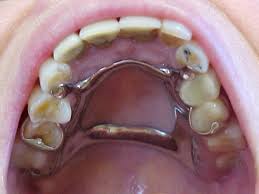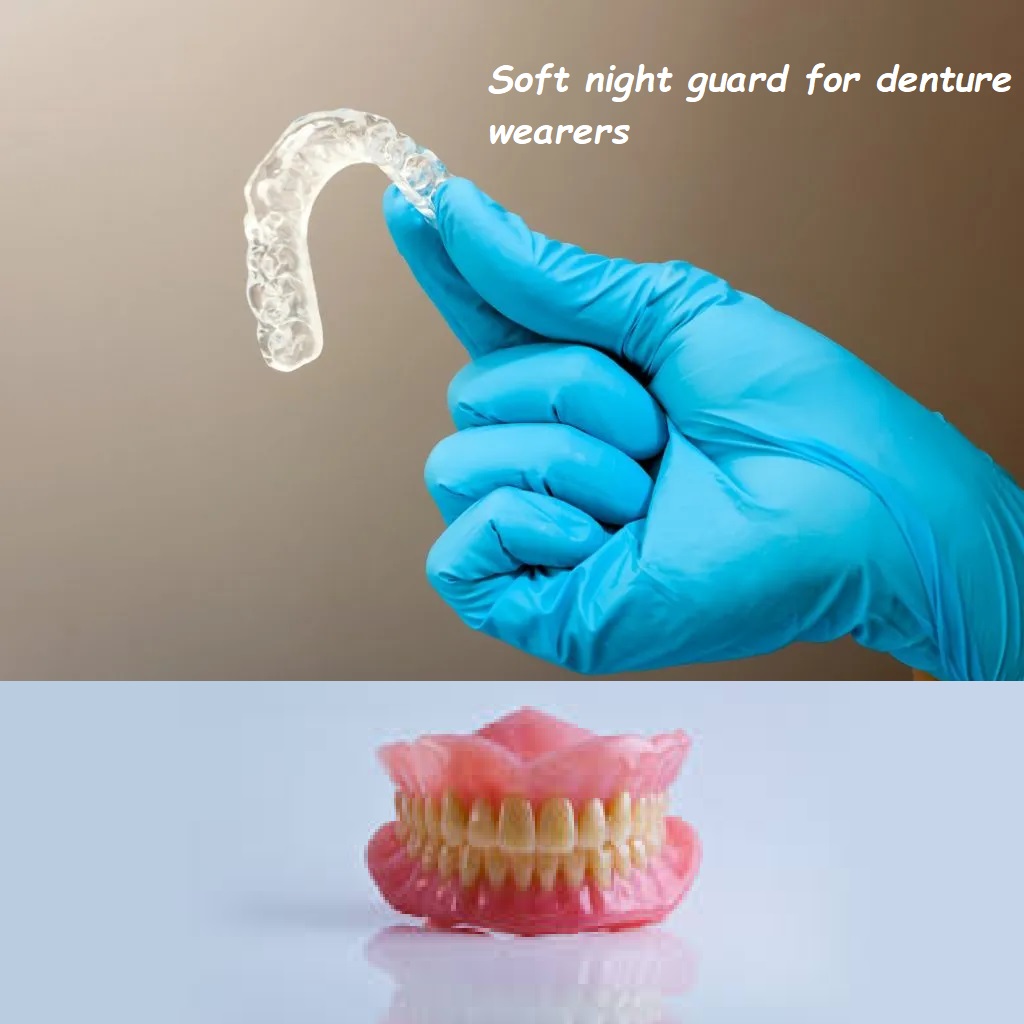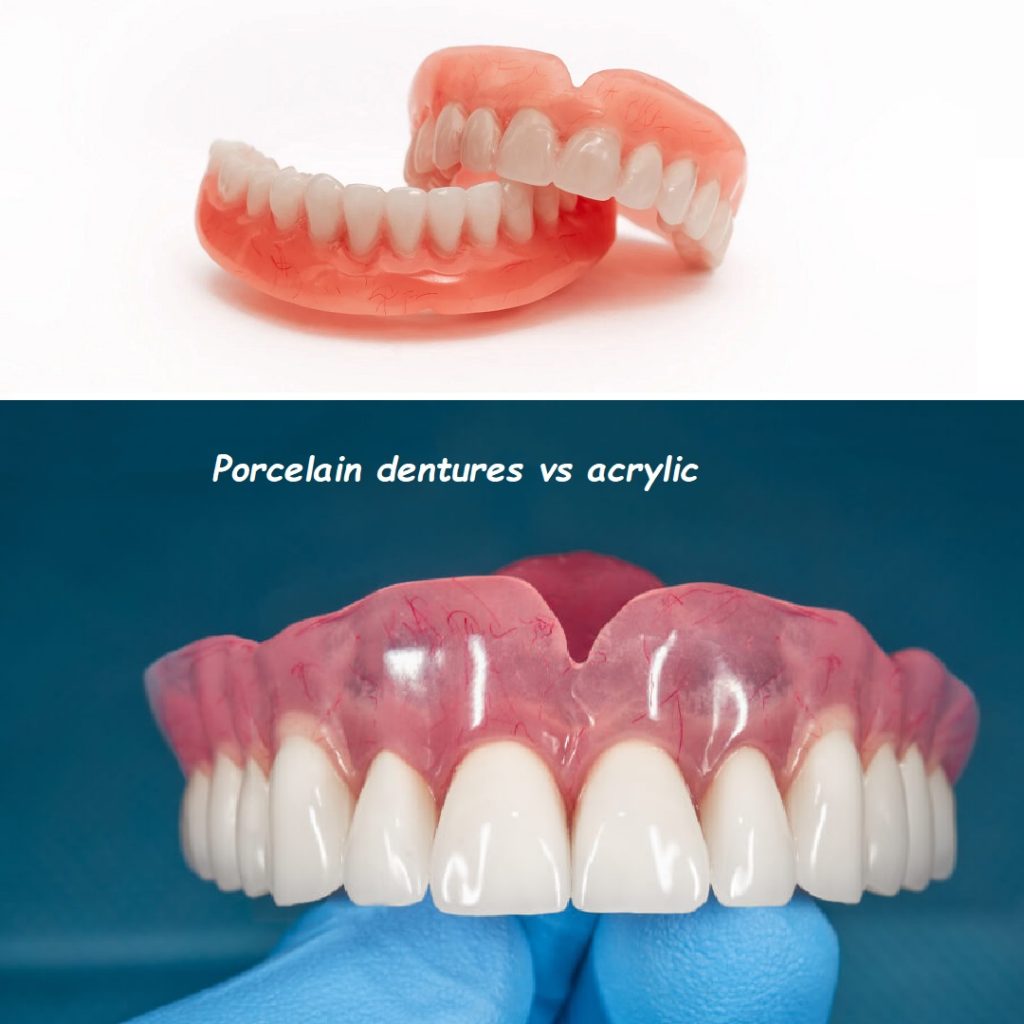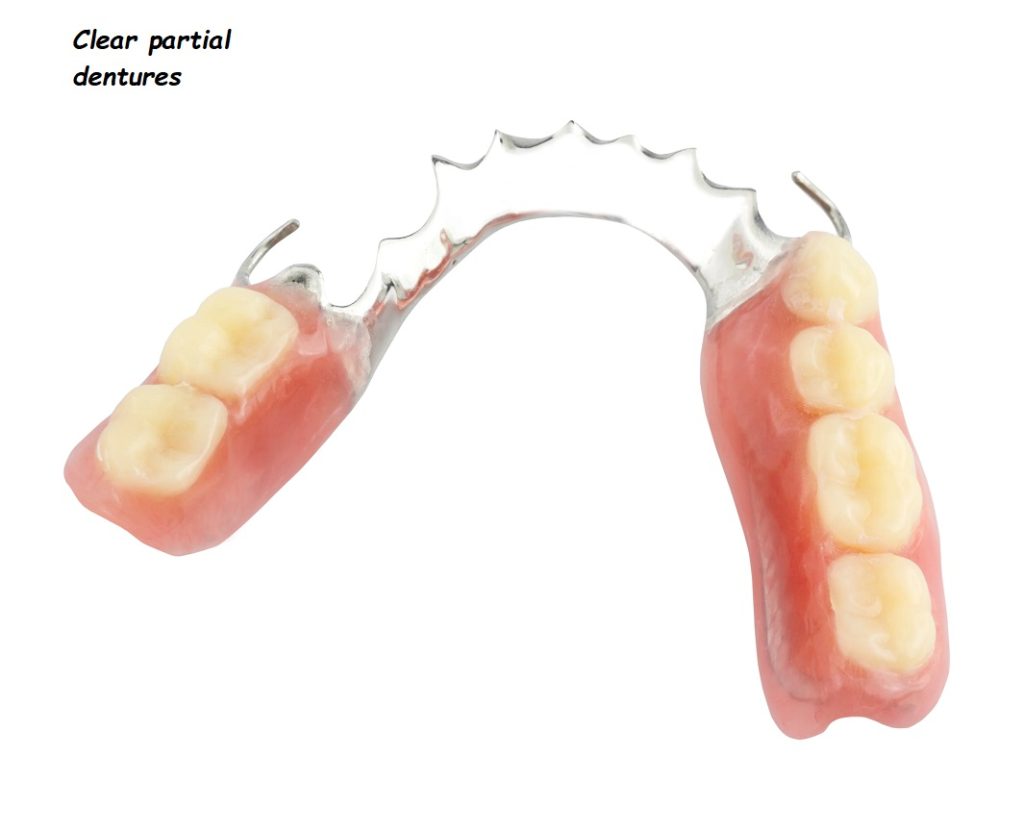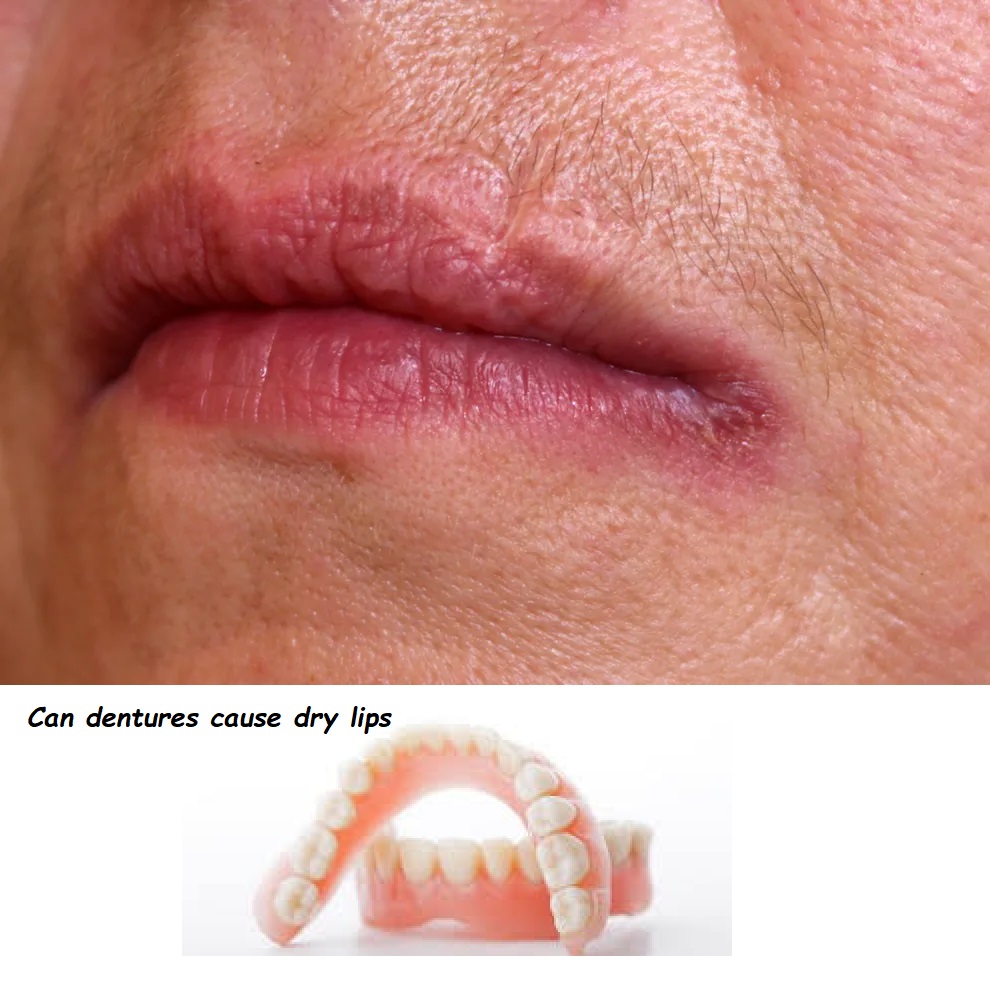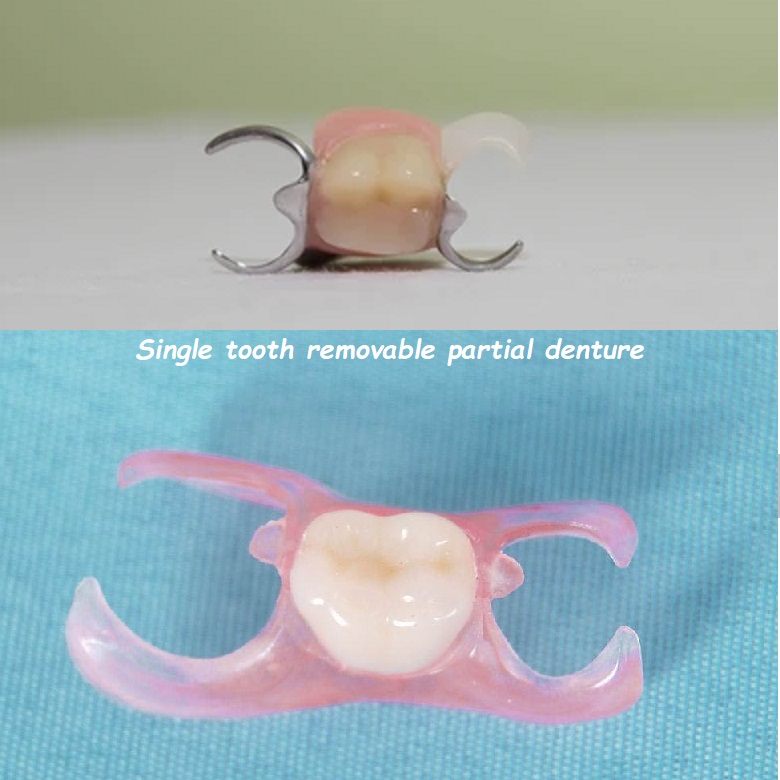Partial dentures for upper back teeth are a practical solution for individuals missing some, but not all, of their upper teeth. These dentures help restore the functionality and aesthetics of the mouth, allowing individuals to chew food properly and speak clearly. This guide will cover everything you need to know about partial dentures for upper back teeth, including their benefits, the fitting process, care instructions, and common concerns.
Understanding Partial Dentures for Upper Back Teeth
Partial dentures are removable dental appliances designed to replace one or more missing teeth in the upper or lower jaw. For those missing upper back teeth, partial dentures help maintain the alignment of remaining teeth, improve chewing ability, and restore a natural-looking smile.
Benefits of Partial Dentures for Upper Back Teeth
- Improved Chewing Function: Missing upper back teeth can make chewing difficult. Partial dentures restore the chewing surface, allowing you to eat a wider variety of foods comfortably.
- Enhanced Aesthetics: Partial dentures fill in gaps left by missing teeth, enhancing your smile and boosting your confidence.
- Support for Facial Structure: Missing teeth can lead to sagging cheeks and a prematurely aged appearance. Partial dentures help support facial muscles and maintain your facial structure.
- Prevent Shifting of Remaining Teeth: When a tooth is lost, adjacent teeth can shift into the gap, causing misalignment. Partial dentures prevent this shifting, helping maintain proper alignment.
- Improved Speech: Missing teeth can affect your ability to pronounce certain words clearly. Partial dentures restore your ability to speak naturally.
Types of Partial Dentures for Upper Back Teeth
- Cast Metal Partial Dentures: These are the most common type of partial dentures, made with a metal framework that supports the replacement teeth. They are durable and offer a strong fit.
- Acrylic Partial Dentures: Also known as flippers, these are less expensive and are typically used as temporary solutions. They are made entirely of acrylic and can be bulkier than metal partial dentures.
- Flexible Partial Dentures: Made from a flexible plastic material, these dentures are lightweight and offer a comfortable fit. They blend well with natural gums and are a good option for those with metal allergies.
The Fitting Process for Partial Dentures
The process of getting partial dentures for upper back teeth typically involves several steps:
- Initial Consultation: During the first visit, your dentist will evaluate your oral health, discuss your needs, and take impressions of your mouth.
- Designing the Denture: The impressions are sent to a dental laboratory where your custom partial dentures are designed. Your dentist will ensure that the dentures match the color and shape of your natural teeth.
- Try-In and Adjustments: Once the dentures are ready, you’ll have a fitting appointment. Your dentist will place the dentures in your mouth and make any necessary adjustments to ensure a comfortable fit.
- Final Placement: After adjustments, the final version of your partial dentures will be placed. Your dentist will provide instructions on how to wear and care for your new dentures.
Caring for Your Partial Dentures
Proper care of partial dentures for upper back teeth is essential to ensure their longevity and maintain oral health. Here are some tips:
- Daily Cleaning: Remove your partial dentures daily and clean them with a denture brush and mild denture cleaner. Avoid using regular toothpaste, as it can be too abrasive.
- Soak Overnight: Soak your dentures in a denture-cleaning solution overnight to keep them clean and prevent bacteria buildup.
- Handle with Care: Be gentle when handling your dentures to avoid dropping and damaging them. When cleaning, fill the sink with water or place a towel at the bottom to cushion any accidental drops.
- Maintain Oral Hygiene: Brush your remaining teeth, gums, and tongue daily to prevent plaque buildup and maintain oral health. Rinse your mouth with a mouthwash recommended by your dentist.
- Regular Dental Check-Ups: Visit your dentist regularly to ensure your dentures fit properly and to address any issues or adjustments needed.
Tips for Adjusting to Partial Dentures
Adjusting to partial dentures for upper back teeth can take some time. Here are some tips to help you adapt:
- Start with Soft Foods: Begin by eating soft foods that are easy to chew, such as yogurt, mashed potatoes, and soups. Gradually introduce harder foods as you become more comfortable.
- Chew Evenly: Distribute food evenly on both sides of your mouth to avoid putting too much pressure on one side and to help stabilize the dentures.
- Practice Speaking: Speaking with partial dentures may feel awkward initially. Practice speaking aloud, reading out loud, and repeating difficult words to improve your clarity.
- Use Denture Adhesives: If your partial dentures feel loose, using a denture adhesive can provide extra stability and improve your confidence when eating and speaking.
- Be Patient: It may take a few weeks to fully adjust to wearing partial dentures. Be patient with yourself and give your mouth time to adapt.
Common Concerns and Solutions
1. Discomfort and Soreness
It’s normal to experience some discomfort and soreness when first wearing partial dentures. This should subside as your mouth adjusts. If discomfort persists, contact your dentist for adjustments.
2. Difficulty Eating
Eating with partial dentures can be challenging initially. Start with soft foods and gradually introduce more solid foods as you become more comfortable. Chew slowly and evenly on both sides of your mouth.
3. Speaking Challenges
Speaking with partial dentures may feel awkward at first. Practice speaking aloud and reading out loud to help your mouth adjust. Over time, your speech should return to normal.
4. Denture Fit
If your dentures feel loose or uncomfortable, contact your dentist. They can make necessary adjustments to improve the fit and ensure your dentures are comfortable.
5. Maintenance and Cleaning
Proper maintenance and cleaning of your partial dentures are crucial to their longevity and your oral health. Clean your dentures daily, soak them overnight, and maintain good oral hygiene.
When to Contact Your Dentist
While some discomfort and adjustment challenges are normal, certain issues may require professional attention. Contact your dentist if you experience:
- Severe or persistent pain
- Dentures that cause sores or ulcers
- Difficulty eating or speaking that does not improve
- Dentures that feel excessively loose or do not fit properly
- Damage or breakage of the dentures
Your dentist can evaluate your situation, make necessary adjustments, and provide additional guidance to ensure a smooth experience with your partial dentures.
Conclusion
Partial dentures for upper back teeth are a practical solution for replacing missing teeth, improving oral function, and enhancing your smile. While adjusting to partial dentures can take time, proper care and regular dental check-ups can ensure a comfortable and successful transition. By following the tips and strategies outlined in this guide, you can enjoy the benefits of your partial dentures and maintain a healthy, confident smile. If you have any concerns or questions, consult with your dentist to receive personalized advice and support.
How Many Teeth Do You Need for an Upper Partial Denture?
An upper partial denture is typically used to replace several missing teeth in the upper jaw while preserving the remaining natural teeth. The number of teeth required for an upper partial denture depends on the extent of tooth loss and the specific needs of the patient:
- Partial Coverage: Generally, an upper partial denture is designed to replace a segment of missing teeth rather than a full arch. It can replace as few as one or two missing teeth or cover a larger gap, depending on the patient’s dental condition.
- Supportive Teeth: The remaining natural teeth in the mouth serve as anchors for the partial denture. The more natural teeth available for support, the more stable the partial denture will be. Ideally, there should be healthy and strategically located teeth to help secure the partial denture.
- Design Considerations: The design of the partial denture will be customized based on the number of missing teeth, the arrangement of the remaining teeth, and the patient’s overall oral health. In some cases, partial dentures may also include additional elements like clasps or attachments to ensure proper fit and function.
Can You Eat with Back Partials?
Yes, you can eat with back partials, though there may be some adjustments needed:
- Adaptation Period: When first using a partial denture, especially one that replaces back teeth, there may be an adjustment period as you get used to the feel and function of the denture. It may take time to adapt to chewing with the partial.
- Functionality: Back partials are designed to help with chewing and grinding food. They can effectively restore much of the function of the missing back teeth, allowing you to eat a variety of foods. However, more complex or hard-to-chew foods may require extra caution and adaptation.
- Comfort and Fit: Ensuring that the partial denture fits properly and is well-adjusted will enhance comfort and functionality. Regular follow-up appointments with your dentist can help address any issues and optimize the fit.
What Is an Upper Partial Denture?
An upper partial denture is a removable dental prosthesis designed to replace missing teeth in the upper jaw while preserving the remaining natural teeth. It consists of:
- Artificial Teeth: These are crafted to replace the missing teeth and are typically made from materials such as acrylic resin or porcelain.
- Base Plate: The base plate, usually made from acrylic or metal, supports the artificial teeth and fits over the palate (the roof of the mouth) and the remaining natural teeth.
- Retention Mechanisms: Partial dentures are held in place by clasps or other retention mechanisms that anchor onto the remaining natural teeth. These mechanisms help to stabilize the denture and ensure a secure fit.
- Custom Design: Each upper partial denture is customized to fit the patient’s mouth, taking into account the number of missing teeth, the arrangement of the remaining teeth, and the overall oral health.
Can You Wear Partial Dentures with No Back Teeth?
Yes, you can wear partial dentures even if you have no back teeth, though there are specific considerations:
- Design and Support: A partial denture designed for a situation with no back teeth will typically include additional design elements to provide support and stability. This may include more extensive base coverage or different types of clasps to anchor the denture securely.
- Functionality: Partial dentures can still restore function and improve aesthetics even when they replace only front teeth or when no back teeth are present. They help with chewing and speaking, although chewing efficiency may be somewhat reduced compared to having back teeth.
- Adjustment: If no back teeth are present, the partial denture may need to be adjusted to ensure a comfortable fit and effective function. Regular follow-ups with your dentist will help address any issues and optimize the performance of the denture.
- Alternative Solutions: In cases where there are no back teeth, other dental solutions, such as implant-supported dentures or bridges, might be considered. These options can offer additional stability and functionality.
In summary, upper partial dentures can replace missing teeth in various configurations and are designed to restore function and aesthetics. They can be worn with or without back teeth, though special considerations may apply depending on the extent of tooth loss.
What Is the Most Comfortable Partial Denture?
The comfort of a partial denture can vary based on several factors, including the design, materials used, and the individual’s oral anatomy. Generally, the following types of partial dentures are considered to be among the most comfortable:
- Flexible Partial Dentures: Made from flexible materials such as nylon or resin, these dentures adapt more easily to the shape of your mouth and are less likely to cause discomfort. They often have a more natural look and feel compared to traditional acrylic dentures.
- Metal-Based Partial Dentures: These dentures have a metal framework that provides a strong and stable base. They are often made from materials like chrome-cobalt, which is both durable and thin, allowing for a more comfortable fit with less bulk.
- Precision Partial Dentures: These use precision attachments rather than clasps to connect to the remaining teeth. They are designed to fit more securely and comfortably, reducing the potential for movement or irritation.
- Custom-Made Dentures: A partial denture tailored specifically to the contours of your mouth and the positions of your remaining teeth will generally offer the best comfort. Custom fabrication allows for a more precise fit and minimizes discomfort.
Are Partial Upper Dentures Uncomfortable?
Partial upper dentures can sometimes be uncomfortable, especially when first worn. Potential discomfort may include:
- Adaptation Period: New partial dentures, particularly upper dentures, often require an adaptation period during which you may experience discomfort or irritation. This is normal and usually resolves as you get used to wearing the denture.
- Fit Issues: If the partial denture does not fit well, it can cause sore spots or pressure points. Regular adjustments by your dentist can help address these issues and improve comfort.
- Palate Coverage: Upper partial dentures cover a significant portion of the palate, which can feel unusual or uncomfortable at first. However, modern designs aim to minimize the coverage area while still providing adequate support.
- Materials and Design: The choice of materials and design can impact comfort. For example, flexible dentures or those with a well-designed base may offer greater comfort compared to traditional acrylic dentures.
Can I Sleep with Partials In?
While it is generally not recommended to sleep with partial dentures in, some people do choose to do so. Here are the key considerations:
- Oral Health: It’s important to remove partial dentures at night to allow your gums and tissues to rest and recover. Sleeping with dentures in place can potentially lead to oral health issues, such as infections or sores.
- Cleaning: Removing dentures at night allows you to clean them thoroughly and maintain good oral hygiene. This also helps prevent the buildup of plaque and bacteria.
- Comfort: Some individuals may experience discomfort or irritation if they wear dentures while sleeping. Removing them at night can help alleviate any issues.
- Dentist’s Advice: Always follow the advice of your dentist regarding the use and care of your dentures. They may recommend specific practices based on your individual needs.
What Are the Risks of Partial Dentures?
Partial dentures come with certain risks and potential issues:
- Discomfort and Irritation: Poorly fitting dentures can cause discomfort, sores, or irritation in the mouth. Proper adjustments and regular follow-ups are essential to address these problems.
- Gum and Bone Health: Long-term use of partial dentures can sometimes lead to changes in the shape of the gums and bone. This can affect the fit of the dentures and overall oral health.
- Plaque and Bacteria: Dentures can harbor plaque and bacteria if not cleaned properly. This can lead to oral infections or bad breath.
- Denture Movement: In some cases, partial dentures may shift or move while eating or speaking, which can affect comfort and functionality.
- Increased Risk of Tooth Decay: The presence of partial dentures can sometimes contribute to an increased risk of tooth decay in the remaining natural teeth if proper oral hygiene is not maintained.
Can You Wear Partial Dentures Permanently?
Partial dentures are designed to be a long-term solution for missing teeth, but they are not typically intended to be worn permanently in the sense of never removing them:
- Daily Removal: It is generally recommended to remove partial dentures daily for cleaning and to give your gums a rest. This practice helps maintain oral health and ensures the longevity of the dentures.
- Long-Term Use: While partial dentures can be worn for many years with proper care, they may need to be replaced or adjusted over time due to changes in the mouth or wear and tear.
- Permanent Alternatives: Some patients may opt for permanent alternatives such as dental implants, which provide a more stable and long-lasting solution compared to removable partial dentures.
- Regular Checkups: Regular dental checkups are crucial to monitor the condition of the partial dentures and the health of your gums and remaining teeth. Adjustments or replacements may be necessary based on these evaluations.
In summary, while partial dentures can be a highly effective and comfortable solution for missing teeth, they require proper care and maintenance. Regular adjustments, cleaning, and dental checkups are important to ensure comfort, functionality, and overall oral health.
